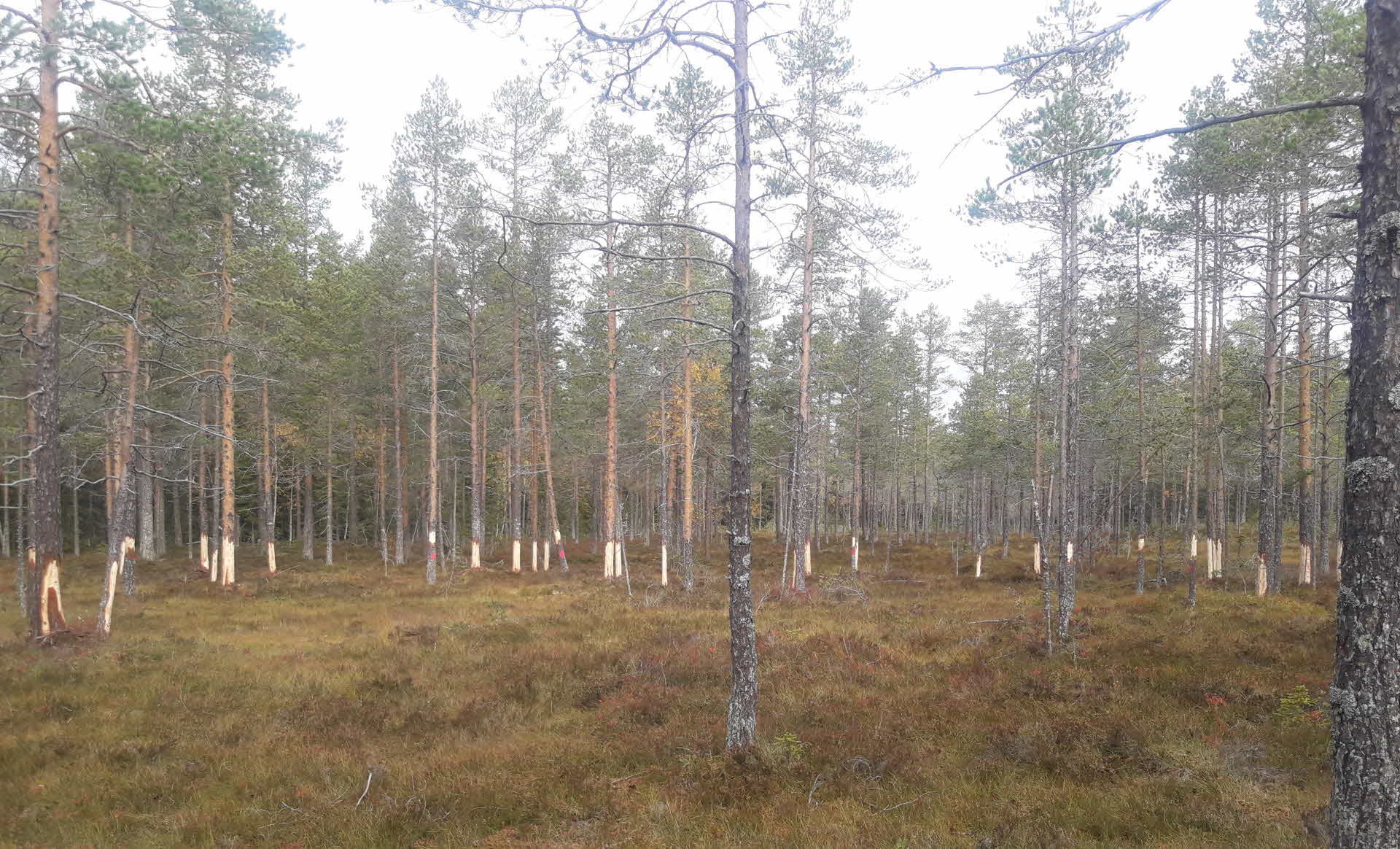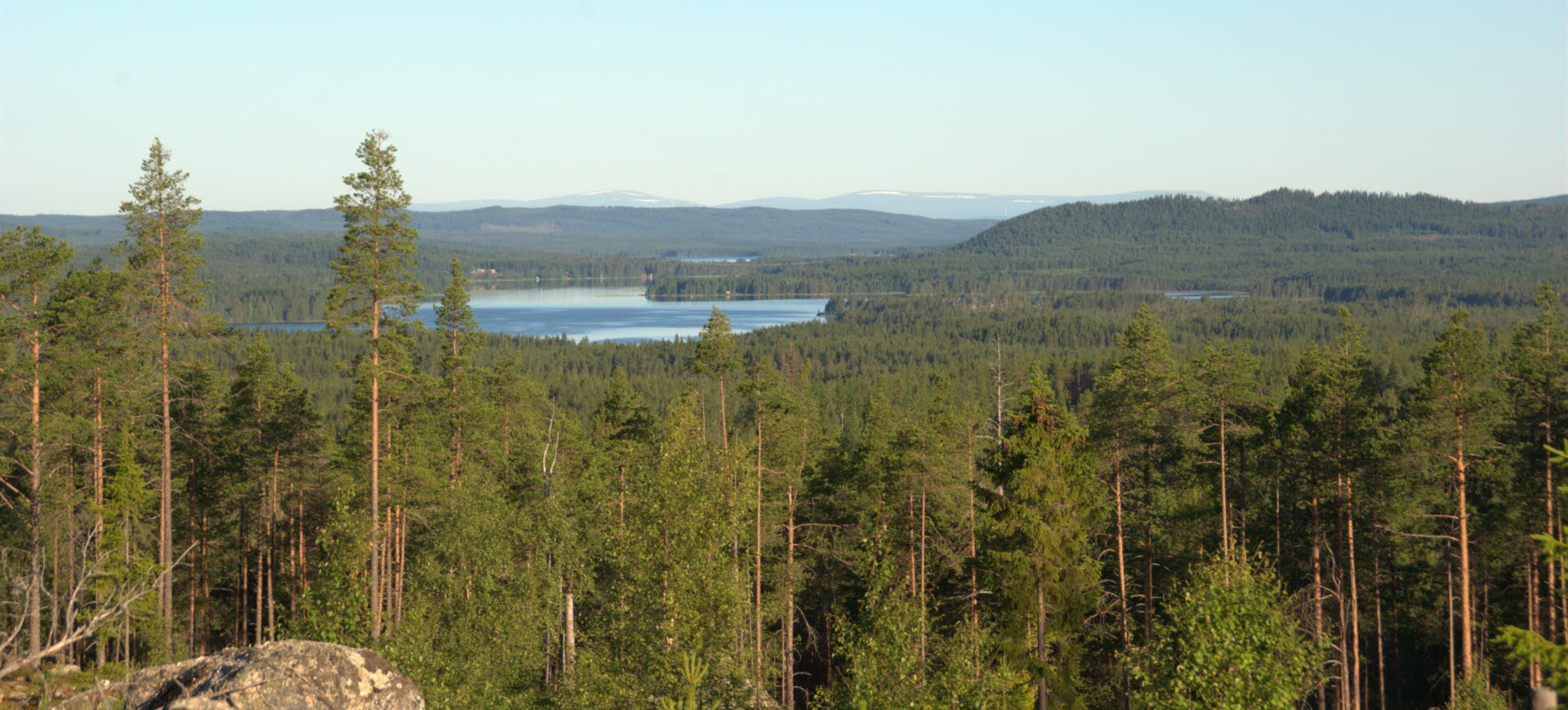
Märlingsberget Conservation Park
Märlingsberget Conservation Park in Jämtland contains beautiful pine forests and several small lakes, bogs and streams. The area has many hiking trails, nice view-points and traces of those who once used the forest for its living.
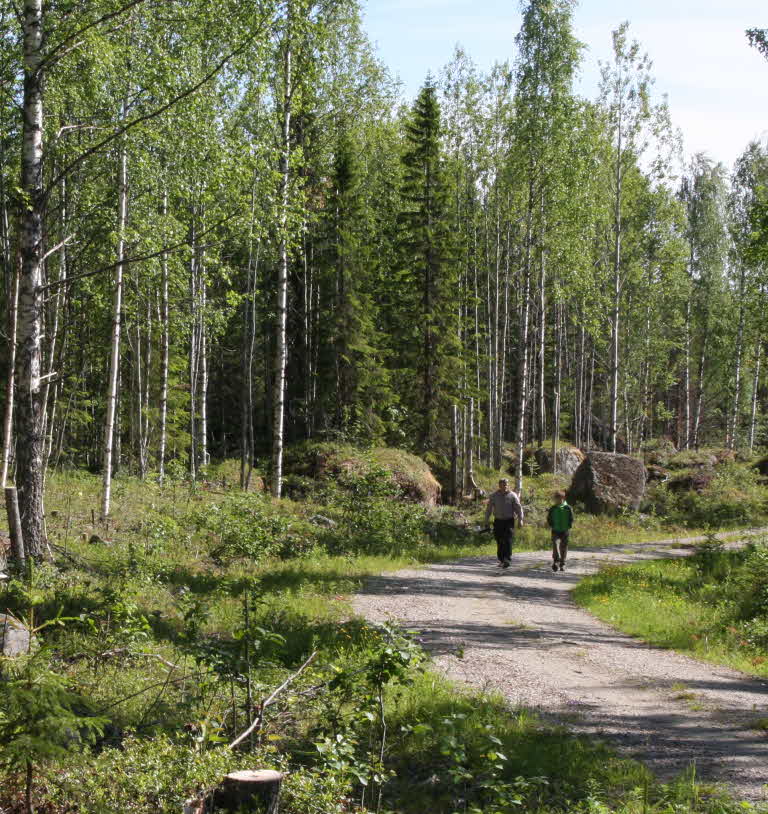
The Märlingsberget Conservation Park comprises slightly more than 2,000 hectares and it lies in the Municipality of Bräcke in south-eastern Jämtland.
It has relatively large areas that have remained uncultivated since the mid-19th century when the most recent major forest fires took place. The main reason that the forests have not been cultivated is the inaccessible nature of the area, with terrain that is hilly in many places, full of boulders and difficult to penetrate. In addition, the landscape is broken up by numerous small lakes, bogs and streams.
Old pine trees
The park mainly contains pine forest, most of which still bare the marks of the many forest fires that have occurred in the area. Dead pine wood is in abundance, meaning that many unusual wood-decay fungi and insects thrive in this area. Very old pine trees are also dotted throughout the park. In several places, there are trees that are more than 300 years old. The park also has broadleaf-dominated areas, for example, a post-fire forest stand which grew after the forest fire of 1966.
The park border a nature reserve that the Jämtland County Administrative Board has established in the region around Stuguåberget and Märlingsberget.
Nature conservation values
SCA carries out a variety of activities in the park to benefit existing nature conservation values and to create new values. For example, we will perform controlled nature conservation burning in selected areas to help species that depend on fire to survive.
In efforts to create dead wood, which is in short supply in today's forests, our measures will include stripping bark from trees to accelerate the ageing processes. We also promote growth in deciduous forests by felling spruces.
Many animals live in the park, and visitors can see birds including grey-headed woodpeckers, black-throated loons and red-throated loons. There are also otters and wolverines.
The park in figures
- 2,036 hectares in total
- 1,797 hectares are productive forest land
- 812 hectares are managed to preserve or develop natural values
- 34% of the forests have high nature values
- 52% of the forests have an average age of 90 years or more
- The forests consist of 72% pine, 12% spruce, 6% deciduous trees, 10% Pinus contorta (Lodgepole pine).
Veteranisation helps endangered species
SCA is hosting a research project into veteranisation on its land, which is being conducted by the Mid Sweden University. The aim is to study the best methods to accelerate the formation of wood that is normally only found in old trees, to recreate habitats for endangered species.
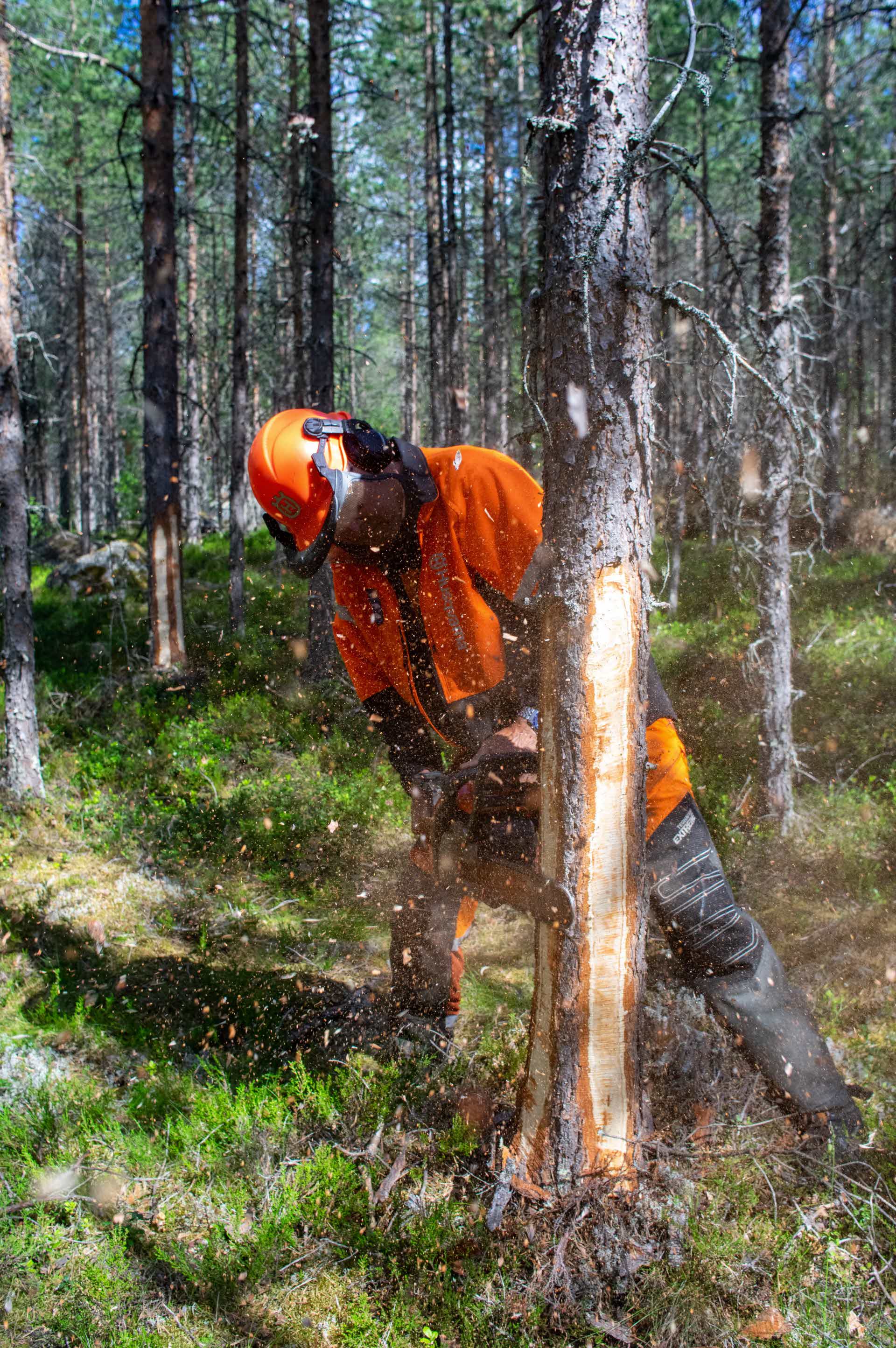

What to do
- Traces of the people who used the forests in the past, such as several huts, the remains of a log chute and charcoal pits.
- Adventurous hiking trails.
- Beautiful view from both mountain Klunsen and Märlingsberget.
- Really old pines along the trail between Stortjärnen och Baksjötjärnen.
- Several beautiful watercourses which visitors can fish in, with a fishing license for the specific lake that you wish to fish in.
- Have a picnic at the picnic area at the beautiful lake Sidsjön.
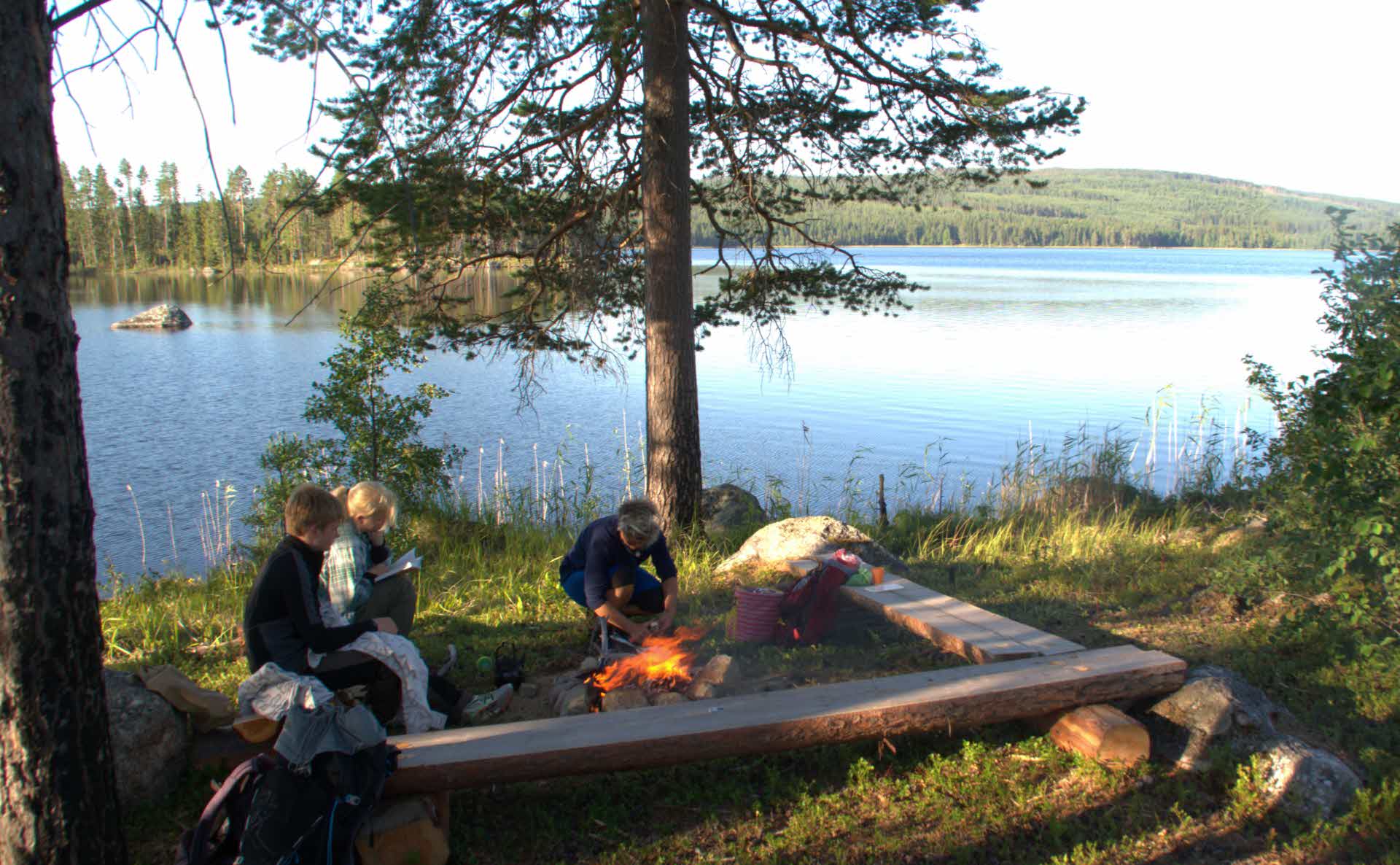
Hiking
Good shoes, a map and compass are recommended for hiking in the park. However, SCA has prepared a couple of hiking trails in the park, for example, at Öster-Märlingen, which is also suitable for families with children. At Lake Sidsjön and Öster-Märlingen, SCA has arranged picnic areas with fireplaces and benches.
Along the southern edge of Öster-Märlingen, there is a 2.5 km long path where you will find signs with information about nature-preserving management in pine forests, which is also gentle on our waterways.
How to get here
Märlingsbergets conservation park is located south of the Municipality of Bräcke in south-eastern Jämtland. Turn of the road E 14 at Bensjö and drive towards Löningsberg.
With GPS: 62.709-15.314
Unused land can give the forest new life
SLU researcher Mats Dynesius believes pine forests on non-productive land – that is, land with very slow growth that is therefore not put to use – could be a sanctuary for disadvantaged forest species. With SCA’s help, he is re-creating living environments with dead and damaged pines and studying what benefits they can provide for various beetles.
